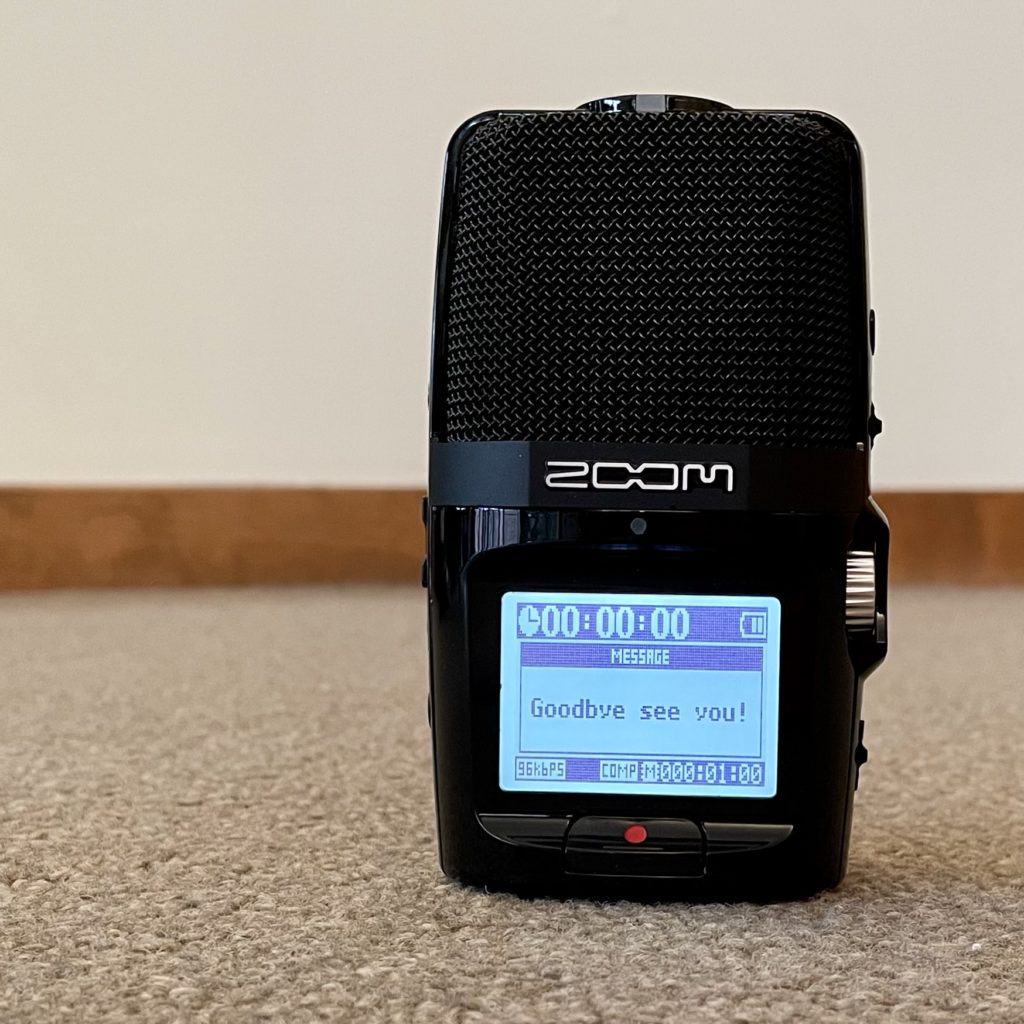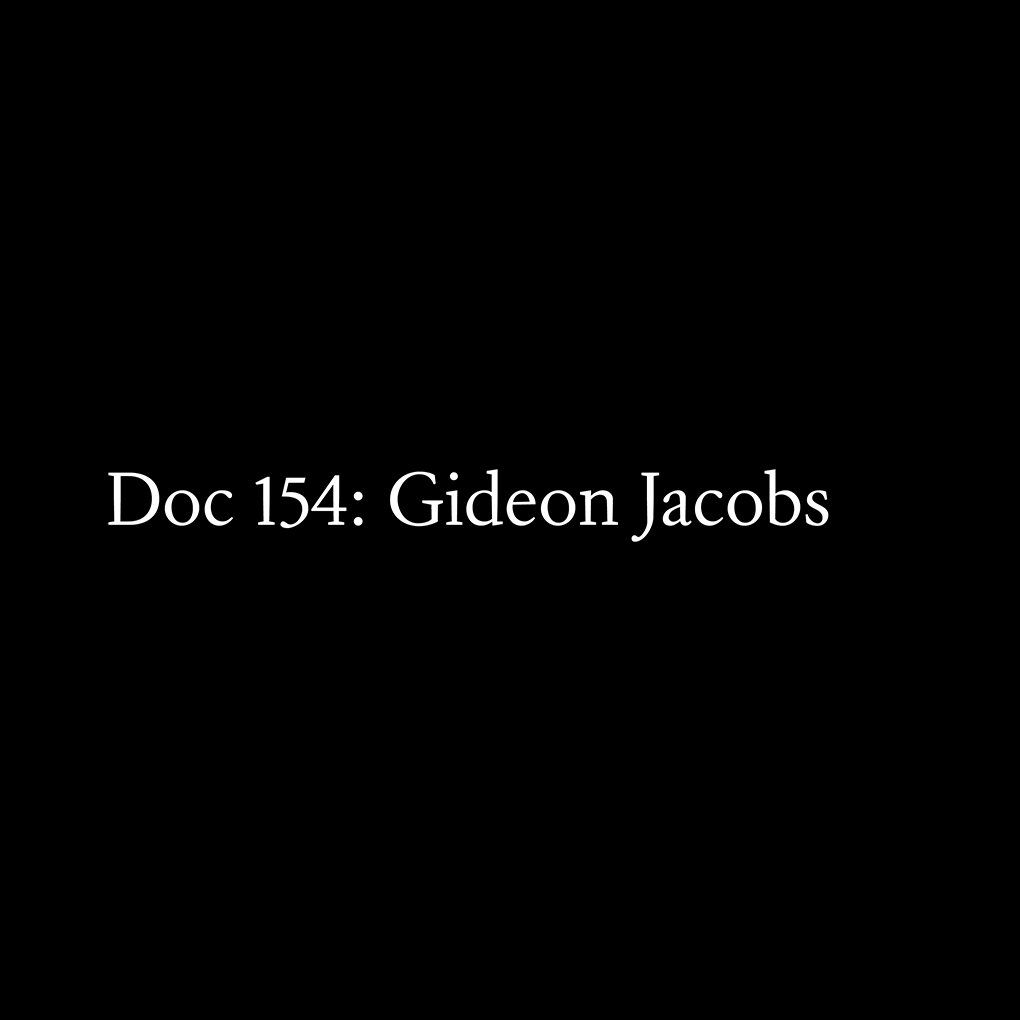
A: …And it lights up?
Me: Yeah.
A: Did it just start recording right now??
[pause]
Me: I hope not…
Laughter
Me: Did it?
A: I think it did.
Laughter
Laughter
A: Yeah it says record now.
In 2013 I got a Zoom H2N field recorder and have been using it regularly since, recording anything and everything from walks in my neighborhood to live shows. I’ve tried my best to catalog the recordings but despite my best organizational efforts I have a large folder of untagged, unlabelled audio files with automatically-generated numerical titles.
I was listening through this folder when I found this 16 second recording, in two formats: midside (MS) and directional (XY). I am with a group of musicians at the end of a session and we have just realized that instead of pushing the record button to end a recording, we actually just began recording. I imagine us improvising for around 20 minutes, ending naturally at the perfect time and patiently letting all of the instruments ring out, only to discover that none of it was documented, all of it lost. As this dawns on us collectively, you can hear about four people total (including me) laugh. I don’t have enough context to identify everyone, where we were, when this was or why we were together. I’ll never know what music we didn’t record.
Playing music with others is sharing a present moment: it’s intimate, dynamic, and leaves no trace. Recording music is an act of listening towards the future: projecting how others will eavesdrop on the moment, a process of documentation. The producing process exists outside of time wherein the audio can be edited, processed, crafted, and rearranged—evading physical constraints of acoustics or human capacity.
My friend Dustin Wong, an incredible live musician and producer, once relayed that he felt that playing music live was like a sacred offering, whereas recording was like trying to contain or hold onto something that inherently can’t be owned. He described playing a familiar song live, over and over, as a dynamic relationship where both the song and the person have room to change and grow together over time, while the recording is a crystallization of a particular moment in that relationship. Dustin’s perspective reminded me that most music isn’t recorded and every piece of recorded music inherently contains countless versions that went undocumented, offered into the aether. In contrast, my own relationship with creating music exists almost entirely in the realm of recording and producing. Working with software, I record everything; wholly archiving every idea, improvisation or sample. My relationship with creating music seldom unfolds in “real time.” I consider working with digital audio as a type of time travel, a way of capturing time and alchemically processing it between and through different states of air/vapor (the real, acoustic signal), liquid (digital audio files in the reversible processes of editing, sequencing and arranging) and ice (the final, frozen, product or song).
For about two years I lived in a house with a terrible tile throughout every room: a brown, red and white digitally printed marble pattern. With an endearing resentment I used to call it the “infinite scab.” One fateful day, I dropped a 2 TB harddrive, which audibly cracked on the hard tile. At that point in my life I felt conflicted between creating digital visual art and digital music; I was pursuing both at the same time and it wasn’t working. The harddrive contained all of my digital artwork, writings, photos, music library, Ableton project files, and more. My expensive efforts to revive the hard drive were unsuccessful. Everything was lost. Curiously, I had fastidiously backed up my iTunes library, Ableton projects, and my audio recordings and samples while I had completely neglected to back up my photos, digital art or most of anything else. Although frustrating, this provided some clarity: I empirically valued music—both my own and my library—much more than I valued my visual media. I have nearly every mp3 I’ve ever acquired since high school while I have very few photos from most of my twenties.
Did you lose something if you don’t know what you lost? I don’t know what photos I’m missing from that harddrive in the same way I don’t know what music went unrecorded in this clip. How much are we supposed to remember? I have more digital media than I can possibly manage. Is it so important to document, archive, and back up everything?
The idea of “losing” music, for most of humanity, would have been inconceivable. The idea of owning music in the way we do today only lasts as long as the history of recording technology and the subsequent commodification of audio with records, tapes, and CDs. This has already been disrupted with digital audio, pirating and now the streaming economy—where people rent the opportunity to unburden themselves from ownership. NFTs are another cultural development, introducing a method for owning digital media, with the caveats of market speculation and the risk of losing your private digital keys. As a digital audio composer, it’s refreshing to remember that music, and most things I value in life are inherently unownable, undocumentable, continuously changing, and ephemeral. Whatever music we made that day was in a shared moment of listening, collaboration, play, and presence.
Nothing was lost.
Celia Hollander is a Los Angeles based artist and composer working with audio, scores, performance, installation, and text. Her work critically engages ways that audio and the act of listening can shape temporal perception, generate narratives, question cultural infrastructures, and cultivate social connection. Her work has been performed or installed at institutions and venues including MOCA, The Getty, Skirball Cultural Art Center, Various Small Fires, and Human Resources. Her discography includes releases on Leaving Records, Recital, and Noumenal Loom and she is a resident deejay on Dublab Radio. She holds an MFA from California Institute of the Arts where she studied music composition.

